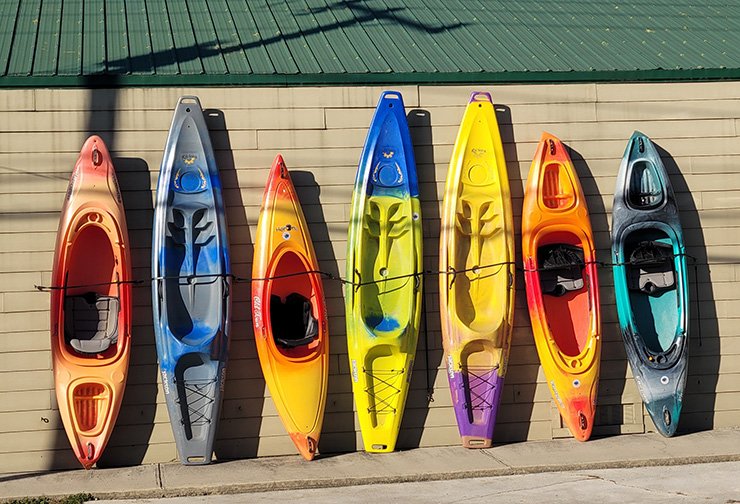There are many different kayaks in all kinds of shapes and sizes. A kayak’s length is an important piece of the puzzle when looking at the overall performance of a kayak. It’s also important to understand that length can be a relative term.
There are shorter and longer kayaks in terms of type. For example, whitewater kayaks will always be on the short side. However, there are also longer and shorter kayaks within the same model, similar to different types of touring kayaks.
This article will give you an in-depth understanding of all things length, and help you understand where longer and shorter kayaks will excel and how this impacts you as a paddler.
Key Takeaways
- Many factors contribute to a kayak’s performance, but length is one of the most basic things to understand when assessing a kayak.
- Shorter kayaks are generally more stable and easier to use, but longer kayaks have more scope for specialization and higher performance ability.
- Longer and shorter are relative terms – but you can classify kayaks based on longer and shorter types.
Longer Kayaks: Advantages and Disadvantages
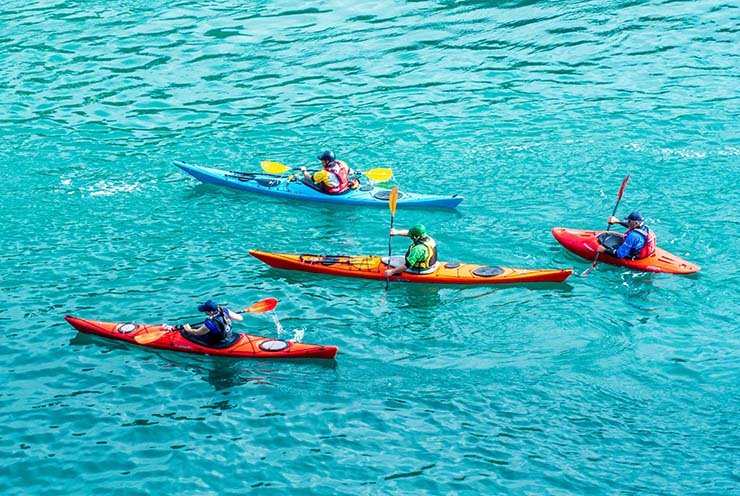
| Advantages | Disadvantages |
| Higher speed and ability to “slice” through more difficult water conditions. | Harder to control for beginners. |
| More storage space. | Less agile than shorter kayaks. |
| Great for touring | Lower overall stability than shorter kayaks. |
Shorter Kayaks: Advantages and Disadvantages
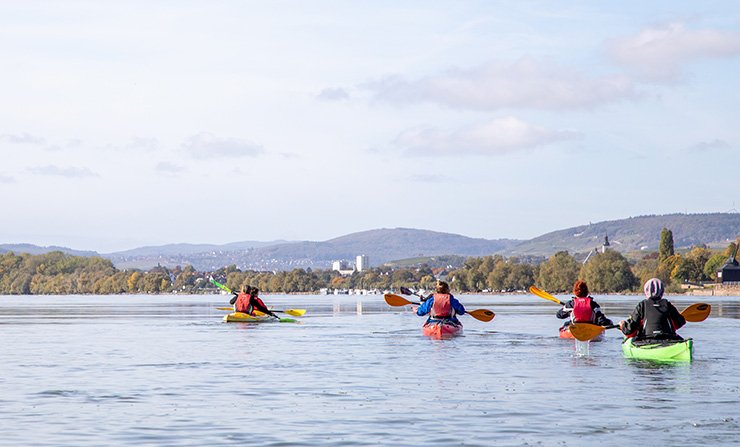
| Advantages | Disadvantages |
| Stability and agility make these kayaks easier to control and use. | Lower performance ceilings – you aren’t going to break speed records in these when compared to longer kayaks. |
| Shorter kayaks can have good weight capacity (but this depends on what kind of kayak you have). | Shorter kayaks have less space to store things (even if they have good weight capacity). |
| Beginner friendly and easier to transport. | Shorter kayaks may not do as well in more difficult water conditions. |
Longer vs Shorter Kayaks: In-Depth Comparison
First of all, while there are longer and shorter kayaks within the same type (there will always be longer and shorter recreational kayaks), when most people are comparing longer vs shorter, they’re primarily looking at the different types of kayaks available.
Generally speaking, fishing kayaks, recreational kayaks, and whitewater kayaks are on the shorter side (with recreational kayaks being very middle of the road, jack of all trades).
Longer kayaks include: touring kayaks, sea kayaks, and tandem kayaks.
It’s important to understand that just getting the longest or shortest kayak you can isn’t the path to success – it has to fit you, the paddler.
With that out of the way, you can make a fair judgment as to what the performance capabilities of short and long kayaks are.
Long and Short Kayaks: Performance
The primary means of judging these kayaks is their performance on the water. Performance can vary quite dramatically across different kinds of frames. What works incredibly well for one kayaker might be another’s worst nightmare.
Generally speaking, when looking at kayak length and performance, you want to examine stability, agility, and speed. While it’s nice to know what a kayak is good at on paper, it’s also important to understand how this translates in real terms.
A great example of this is stability; while shorter kayaks have better stability than longer ones, why are most kayaks built for difficult conditions on the longer side? The sections below will explain all of this and more.
Longer Kayaks Have Greater Speed
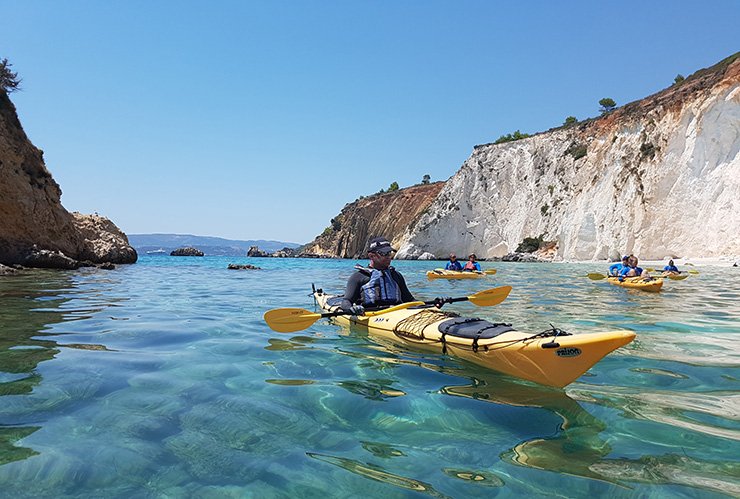
Without a shadow of a doubt, longer kayaks are nearly always faster than shorter kayaks. A sea kayak, for example, is narrower and longer than most other kayaks on the market.
The reasons for this are simple physics – the longer kayak technically has more volume than a shorter kayak, which helps it to float higher on the water even under challenging conditions. However, because a longer kayak is narrower, it can cut through the water with less effort.
All of this translates to better speed and acceleration.
In contrast, the shorter kayak sits lower into the water, and its relatively wider hull doesn’t cut through the water as easily.
Longer Kayaks Have More Storage Space
By definition of being longer and having a larger volume, longer kayaks simply have more space available for storage.
This can be taken to the extreme in some cases, as seen in high-end touring kayaks that are nearly as long as tandem kayaks but designed for kayakers on long expeditions.
That said, shorter kayaks can also have a good weight capacity. A fishing kayak, for example, tends to be shorter and wider when compared to a touring kayak. However, while it can handle a lot of weight, it may not have enough space to store lots of gear.
This is all due to design. A fishing kayak is built to handle a kayaker fishing from a standing position and carry all their gear. They might be coming home a few pounds heavier (if they are taking anything they catch with them), but these kayaks don’t have the storage options that longer kayaks can provide.
Longer Kayaks Tend To Be Built for Greater Performance
In general, longer kayaks have higher performance ceilings. They are kayaks specialized to do a job very well and thrive under competitive conditions. They are designed to have maximum performance, often at the expense of functionality.
While this can apply to some shorter kayaks, as seen in the design of a whitewater kayak. It’s built for agility in rapid river currents, but it is not designed for maximum performance anywhere else.
In most cases, shorter kayaks trade performance for ease of use and functionality.
Shorter Kayaks Are More Stable
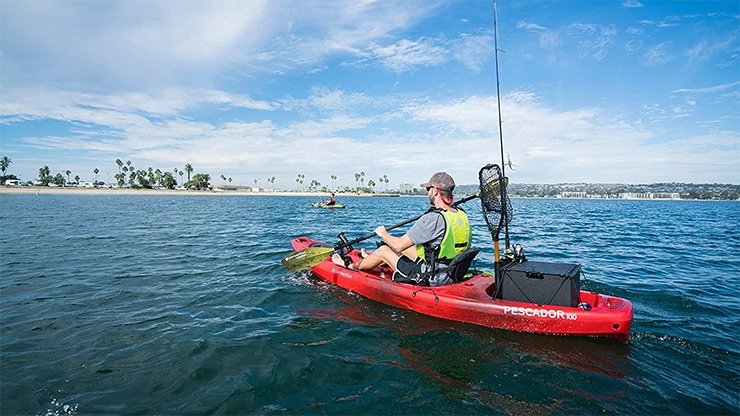
A short kayak is nearly always going to be more stable than longer models. While longer kayaks are built for speed and more efficient paddling, shorter kayaks have greater stability across the board.
Generally, a shorter kayak will feel much more stable on flat water than a longer kayak. This is important for beginners as they will be both less fearful of capsizing, and they can focus their efforts more on learning basic techniques.
Shorter Kayaks Tend To Have More Maneuverability
While longer kayaks have more speed, they sacrifice this for agility and maneuverability. A narrow kayak can slice through waves with more efficiency but doesn’t have the same ability to turn.
This is also thanks to physics. It takes less energy, and is more efficient to rotate a shorter object than a longer object.
The shorter kayak will be easier to turn and won’t have quite as much “drag” or delay compared to a longer kayak. This is especially important on rivers or waterways that are narrow.
It’s also great for beginners because maneuverability and ease of use are much more useful than a higher speed.
Shorter Kayaks Are Usually Designed for Ease of Use
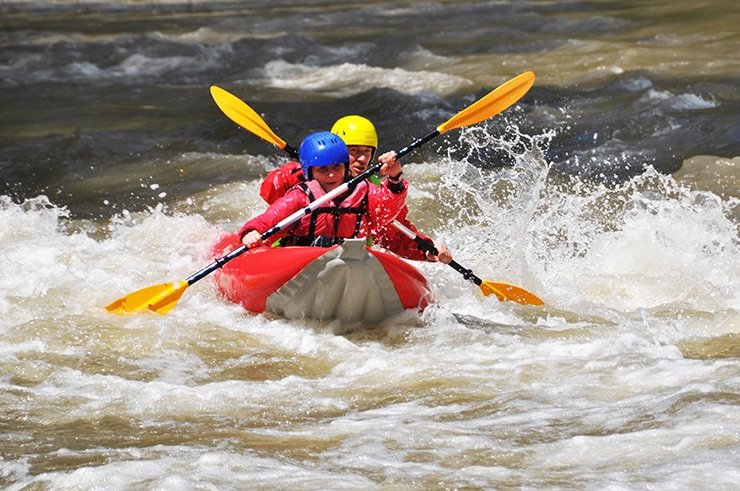
All of the previous analyses of shorter kayaks give us the conclusion that they are just easier to use, but this is by design.
Generally, even the shorter kayaks built to excel in a specific area (like a whitewater kayak) are designed to be easier to control and handle. In contrast, longer kayaks will are built for greater speed or efficiency in difficult conditions.
Another advantage that comes from being short is the ease of transportation. It’s simply easier to put a short kayak onto a roof rack, whereas a longer kayak might take some forward planning.
This adds to the ease of use appeal of shorter kayaks.
When to Choose a Shorter Kayak
Like almost any tool or vehicle, there are situations and circumstances where one kayak will be better than others.
There is no overall “best kayak,” and it’s nearly universal that most kayakers will experiment with more than one different kind over their lifetime.
There are many shorter kayak types, but generally speaking, only a few will be relevant to you, depending on what you’re doing.
Whitewater Kayaking
Let’s start by saying that a whitewater kayak will be on the shorter side no matter who you are.
These kayaks are designed for whitewater rapids where the river does all the acceleration for you, and it’s your job as a paddler to avoid obstacles and not get capsized.
The shorter size helps a whitewater paddler with every goal here. It’s an absolute no-brainer that you’ll want the shortest kayak you can get for any whitewater kayaking.
Kayak Fishing

Fishing kayaks will also be on the shorter and wider side and this is for good reason. There’s no need to be concerned about acceleration or higher performance in this kind of kayaking. As long as you have a stable platform with enough room for your gear, you’re good to go.
If you’re fishing in rivers and more constricted waterways, the short size helps you gain access to more areas, and the ability to quickly turn and maneuver around helps keep your experience pleasant.
You might need to think more about length if you’re kayaking further out on the sea, but this is a fairly niche situation.
Great for Beginners
Finally, most recreational boats tend to be middle of the pack length-wise but head more towards the shorter end.
Most recreational kayaks will hover around 10 feet in length. If you’re one of the taller paddlers, you might want a longer kayak, but for most, this isn’t necessary. In comparison, touring kayaks can go past 16 feet, and you can get sea kayaks that go past 20 feet!
The stability, ease of use, ease of transportation, and better maneuverability make shorter kayaks the best choice for beginners.
When to Choose a Longer Kayak
Longer kayaks also have situations and circumstances where they are best in the slot over their shorter cousins.
In general, more advanced kayakers tend to gravitate towards longer kayaks. A more advanced kayaker has the skills to take advantage of the better paddling efficiency that these kayaks offer.
Long Distance Kayaking
The ability to track efficiently in a straight line over long distances makes the longer hulls (like touring kayaks) the clear winner when it comes to going from A to B.
Higher weight capacity and room for more gear are great for any all-day touring. The better acceleration and efficiency mean you can go further with less energy. Most veteran kayakers and kayak designers know this, which is why you’ll usually see more long kayaks in use here.
Longer Expeditions
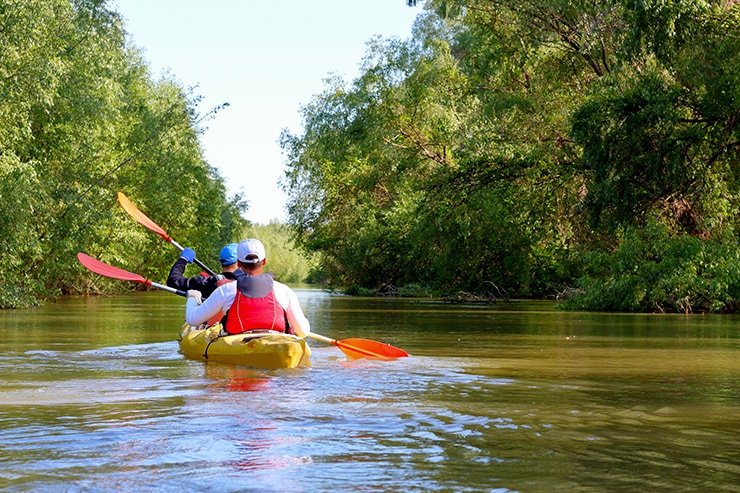
For multi-day expeditions, longer kayaks are the clear winner. Space and storage for gear are at a premium here. In longer expeditions, you also want to move around at a good speed without having to work too hard.
Tandem Kayaking
Tandem kayaks are some of the longest kayaks available. Having to accommodate two people means these vessels need longer hulls compared to most kayaks. Tandem kayaks are interesting because there’s a lot of variation.
Touring tandem kayaks can go past 20 feet, but recreational tandem kayaks range from 12 to 14 feet in length.
The shorter recreational tandem kayaks will be better for beginners who are not spending a long amount of time on the water.
The longer touring tandem kayaks will be better for advanced kayakers and those who are spending more time on the water.
Is a Longer or Shorter Kayak More Stable?
While a good rule of thumb is that a shorter kayak will feel more stable than a longer kayak, there are some important distinctions.
There are two kinds of stability: primary and secondary stability.
Primary stability is how stable and balanced a kayak feels when not moving in flat water. It’s always better in shorter kayaks due to them being wider.
Primary stability is more important to a beginner because it takes less effort to keep the kayak from wobbling.
Secondary stability is how well your kayak balances even when it’s leaning toward one side. Secondary stability is a bit more complicated, in some cases (like in some touring kayaks) you might have better secondary stability because the hull can handle choppy waters better.
A beginner-friendly shorter kayak with good primary stability might not feel so great in these conditions. In comparison, a narrower and longer kayak that would take more effort to stabilize in a calm lake feels way better in more challenging conditions.
Conclusion
To summarize, shorter kayaks are generally more stable, easier to use, and beginner friendly. Longer kayaks tend to be faster and more efficient to paddle but are generally suited to more advanced kayakers.
There is no overall best here, both long and short kayaks excel in different environments and the “best” depends entirely on the individual and their needs.
Thank you for reading. If you enjoyed this article, then please like, comment, or share with anyone who might find the information here useful.
=

